Our journey through the Amazon Region leads us to the Quilombo of Bracinho do Icatu in Baião (Pará) and to its traditional utilization of Cassava. The centuries-old use of Cassava is rooted in the Amazon, but today this plant unites entire continents!
Author: Sina von der Heyde
Leia em Português. Auf Deutsch lesen.
::
Dona Raimunda Paz Viana, one of the oldest women in the Quilombo of Bracinho de Icatú, takes a lot of care and efforts in preparing the manufacture of the Tapioca Flour that has long been a valuable element of her culture. While the large oven is being lit and the wood starts to crackle as it burns, Dona Raimunda crushes the special extract of the Cassava root. While still damp, the crushed mass of root extract is refined by adding Brazilian nuts, and it then only needs to be roasted on the large oven where the Tapioca Flour takes shape on the gently crackling wood.
::
The history of Cassava (manihot esculenta), which belongs to the Spurge family (Euphorbiaceae), goes far back in time in the Amazon Region. This is evidenced by the etymological origin of the word ‘manioc’ from the word ‘maniot’ in the language of the Tupí who, when the Portuguese arrived, still inhabited the Atlantic coast of what would later become Brazil. In the meantime, however, the significance of this crop plant has extended far beyond the Amazon Region.
::
From the Cassava Root to Tapioca Flour
But first of all, let us return to Dona Raimunda’s traditional manufacture of Tapioca Flour. Selma Paz Viana, Dona Raimunda’s daughter and Chairperson of the Quilombo association, gives us a precise explanation of the steps involved. Everything starts with the harvest, of course!
::
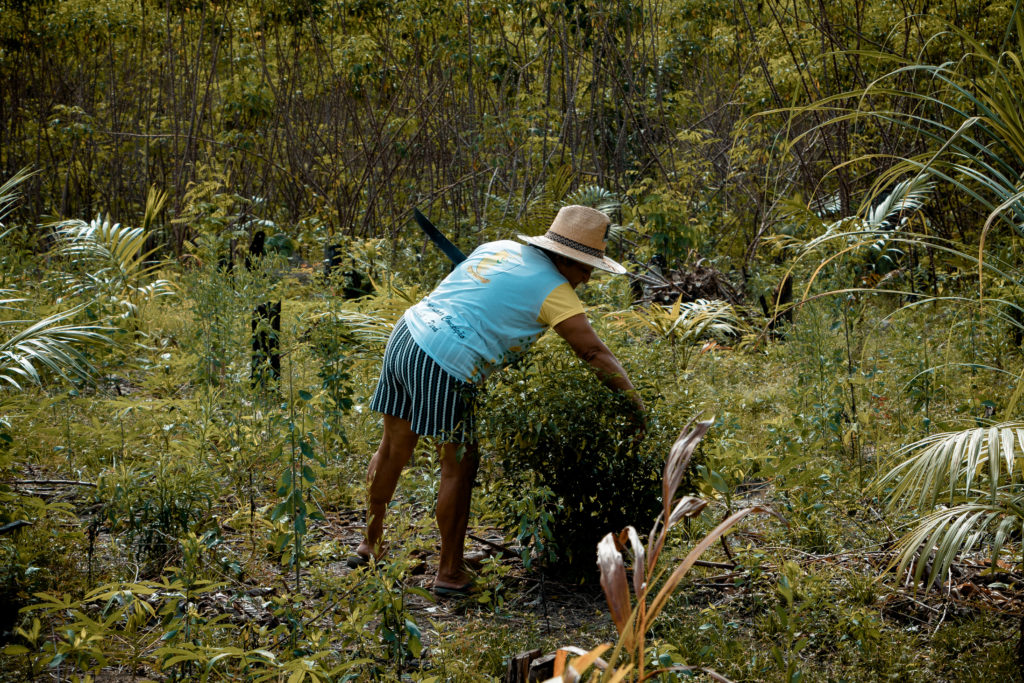

::
When the tuber of the Cassava plant has been harvested on the community’s agricultural land, it is peeled, carefully washed, and ground until a uniform mass is obtained. Selma explains to us that this starchy mass is then diluted with water and passed through a fine sieve. This mass is now left alone for several hours so as to become detoxified. Once the mass has become completely free of water, the water is drawn off and new water immediately added. The water is separated from the white mass one last time, and then the mass can be crushed.
As also shown in the video, the sieved mass is then spread very slowly on the now hot oven — this procedure, which Selma calls “evaporation”, is the most important because it is decisive for the later quality of the flour. For the procedure, the fire must always burn uniformly, otherwise the precious flour could very quickly be burnt. The flour is passed through a medium-sized sieve for one last time and then briefly roasted once again on the oven — “and there we have it, the finished Tapioca Flour” concludes Selma!
::
Traditional and ecological significance of Cassava in the Amazon Region
When the colonial power Portugal set foot in what would later be Brazil, around the year 1500, the agricultural cultivation of the Cassava plant and its large variety of uses were already widely established. However, according to a new study, Cassava was already being cultivated in the Amazon Region more than 10,000 years ago!
During conversations with the people with whom we work in the Amazon Region we learn again and again that Cassava continues to be a valuable element of Amazonian cultures. In a pleasant, comfortable evening conversation with a group of people from the Frei Henri smallholders’ community, our workshop leader Cynthia learned, for example, that they make cakes, Tapioca pancakes, puba flour and porridge out of the flour obtained from the plant.
::
“You make the cake, you make the Tapioca pancakes (…) you make the Puba Flour, you make the porridge…”
::
Cassava, however, is not only of cultural value but is also an important environmental player in the Amazon Rainforest. The reason for this is that unlike imported species, such as the soy plant, Cassava is a native plant that has a positive effect on the local ecological equilibrium. For example, it enriches the soils with important nutrients and also helps Amazonian species to flourish, such as stingless bees. By means of our partnerships, we enable interested people to gain a better understanding of how to keep bees of this type. For several reasons, therefore, the community-based cultivation of Cassava in the Amazon Region is an essential counterpart to the large-scale, conventional agriculture that is causing the destruction of the rainforest to advance further and further during this year also.
::
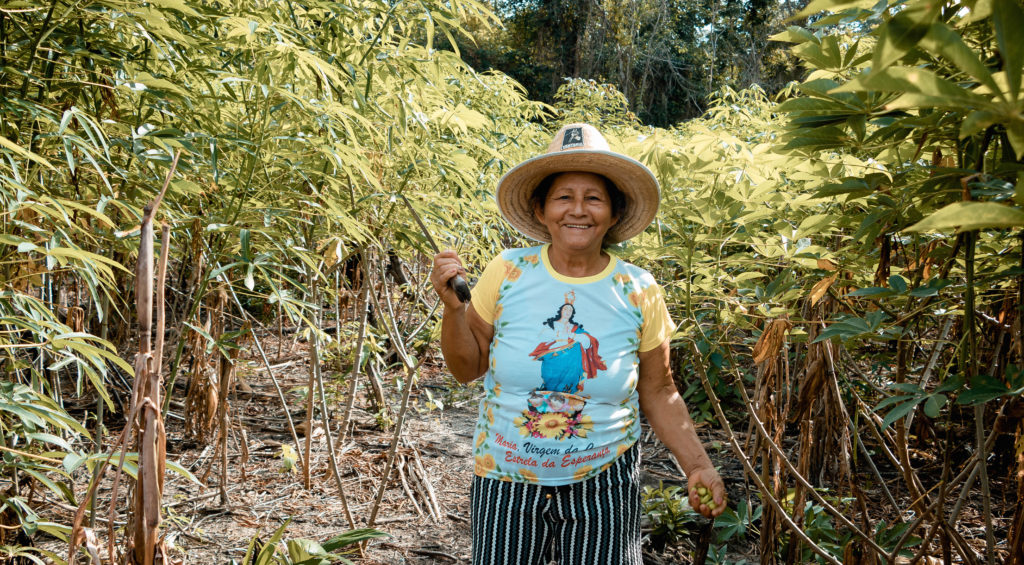
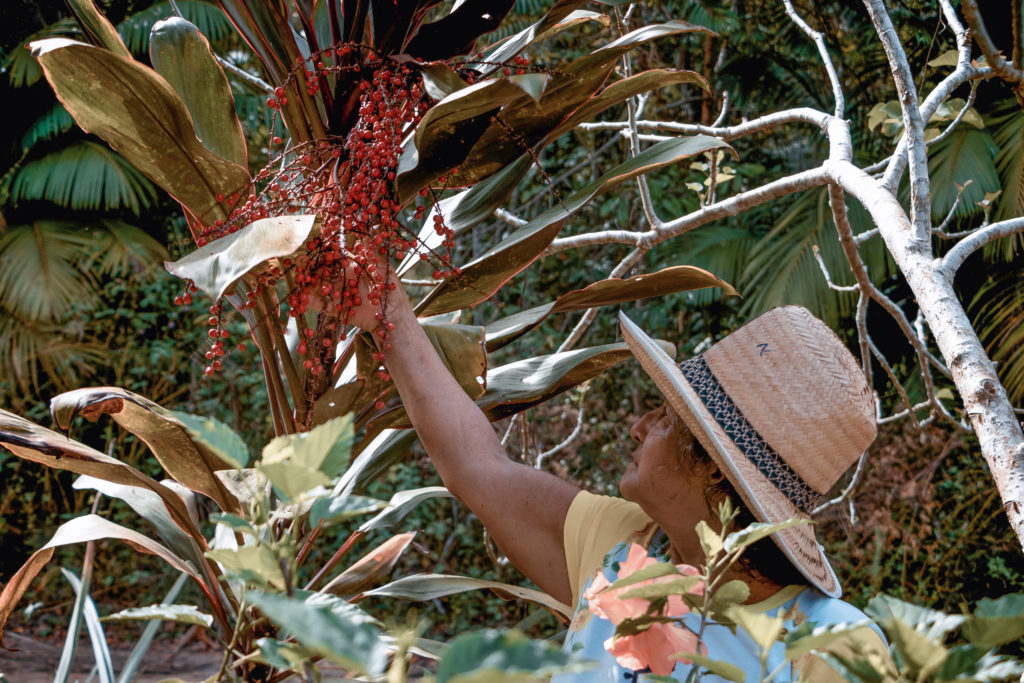
::
Global opportunities and risks of Cassava
The traditional, local cultivation of Cassava also contrasts with the increasing global utilization of the plant. Already during the colonial period, Cassava was exported to other regions of the world, often for the purpose of feeding slaves in those places.
This explains why Cassava is cultivated today in many parts of the tropics and subtropics, with Nigeria being the main producer and Thailand the main exporter — thus, in the year 2020, 302,662,494 tons of Cassava were processed (Source: FAO)!
But where does it all go? As a staple food, Cassava nourishes a large proportion of the world’s population today and 25% of it is by now also being used as animal feed (Source: Prakash 2008). The starch obtained from Cassava is even being praised as an alternative to plastic, thus offering a solution to the global plastic problem. On the other hand, the production of biofuel from Cassava, likewise regarded as a positive development at first, and expected to increase strongly over the next few years, will probably soon lead to conflicts between the need for food supply and the interests of industry.
Unfortunately, this high demand for products obtained from Cassava frequently results in it being grown in monocultures, which make the soils become infertile and displace valuable ecosystems — also in Brazil.
::
Preservation of culture and protection of the Amazon Rainforest
In view of the above, it is all the more important to promote the community-based cultivation of Cassava, as performed by Dona Raimunda and her Quilombo. Through our cooperation with committed people like her, we not only contribute to the preservation of their valuable culture but also support them in their continuing efforts to create a movement that counteracts the environmentally harmful agriculture and the related destruction of the rainforest. Therefore, also in the future, their inspiring, incredibly beautiful cultures should grace the face of the globally significant Amazon Rainforest and protect it.
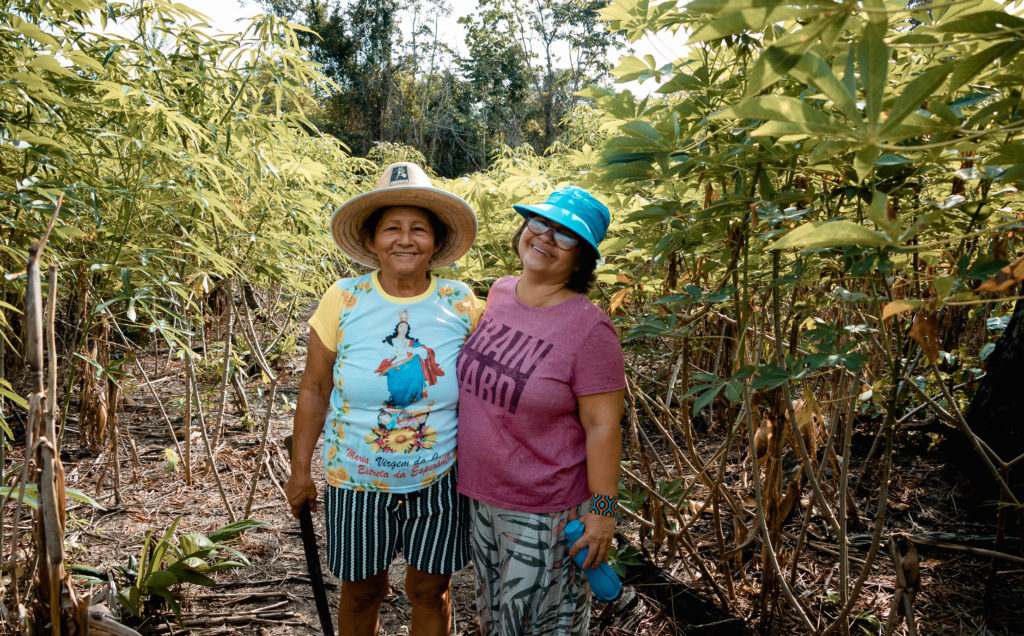
Your donation can have a positive impact on the world!
Subscribe to receive our Newsletter!
Find us also at Linkedin, Facebook, Twitter or Instagram
www.meli-bees.org
❤️
Titelimage: Rayda Lima, edited by Ícaro Uther

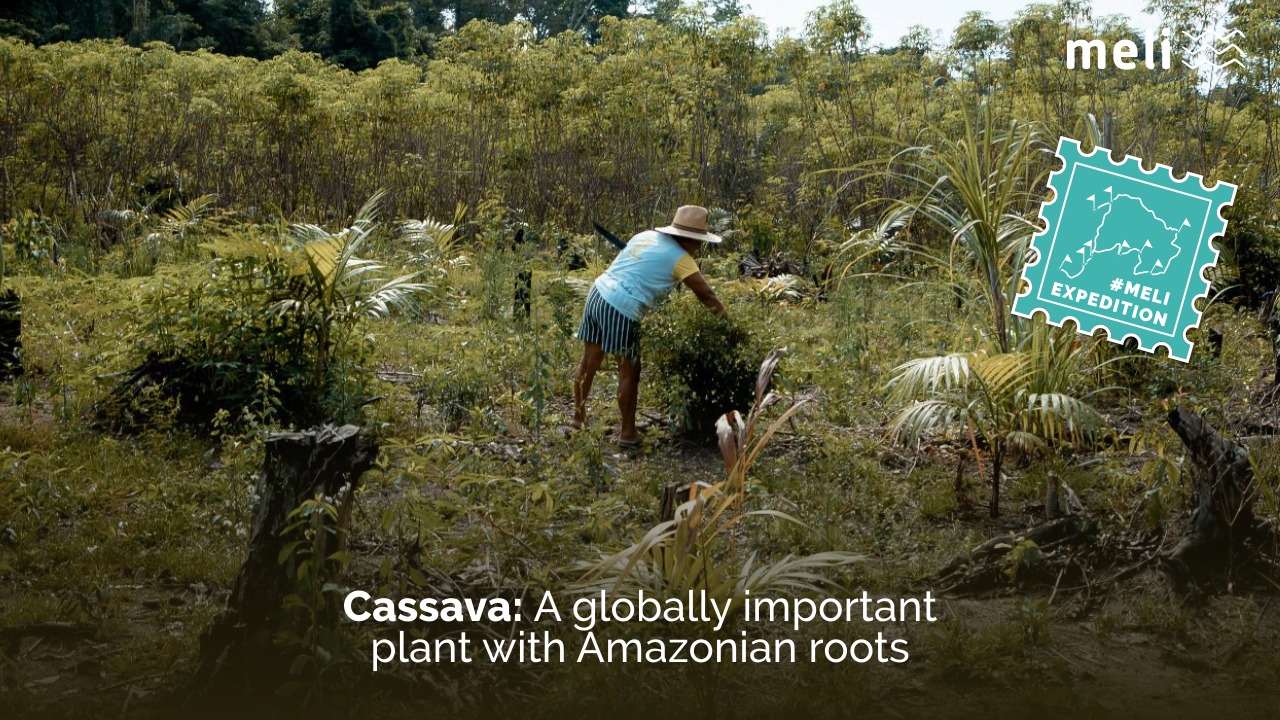
very clear and good article easy to understand. Thank you
How can sustainable practices be implemented in cassava cultivation to ensure its long-term viability?
The text share some opportunities – and the relation of culture and protection, of course! 😀
A video was also shared within our community just a few days ago:
https://www.youtube.com/shorts/CAaYrnUbaOA